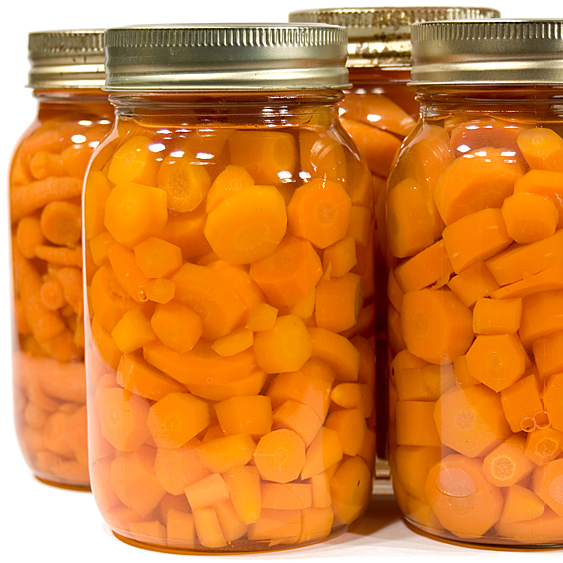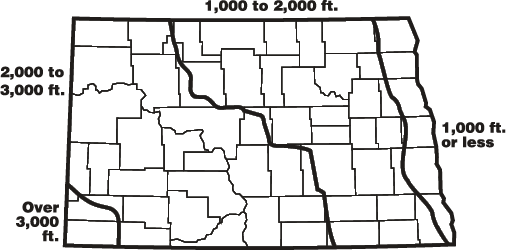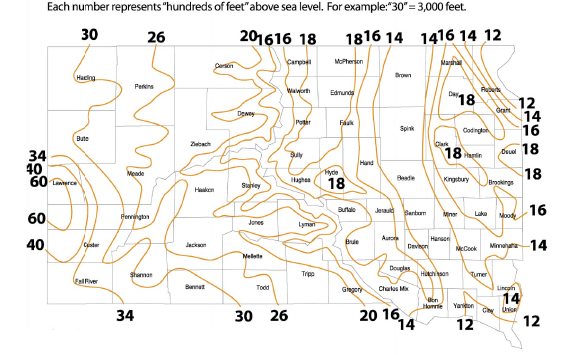As altitudes increase, air becomes thinner, and this affects both pressures and boiling points in home canning. Using the water-bath process times for canning food at sea level may result in spoilage if you live at altitudes of 1,000 feet or more. Water boils at lower temperatures as altitude increases. Lower boiling temperatures are less effective for killing bacteria. Increasing the processing time or canner pressure compensates for lower boiling temperatures. Select the proper processing time and canner pressure for the altitude where you live.
The altitude in North Dakota varies from 800 feet above sea level in the east to 3,000 feet in the west. The map below shows the approximate altitude of areas of North Dakota.
North Dakota Elevation Map - Altitude in North Dakota varies from 800 feet above sea level in the east to 3000 feet in the west.
The altitude in South Dakota varies from 1,200 feet to 6,000 feet above sea level. The map below shows the approximate altitude of areas in South Dakota.
South Dakota Elevation Map
For more specific information regarding altitude in your county, contact your county Extension office.
For more information on this and other topics, see www.ndsu.edu/food
(Click on “Nutrition, Food Safety and Health” then “Food Preservation and Wild Game”)
Source: Based on “Complete Guide to Home Canning,” Agriculture Information Bulletin 539, 2009 revision, and information from the National Center for Home Food Preservation, University of Georgia, Athens, Ga.
The information given herein is for educational purposes only. Reference to commercial products or trade names is made with the understanding that no discrimination is intended and no endorsement by the Extension Service is implied.


